Rust Programming
WebAssembly with Rust
Introduction to WebAssembly and Why Rust
Welcome to our comprehensive guide on WebAssembly and its seamless integration with Rust. In this article, we will explore what WebAssembly (WASM) is, why it revolutionizes web development, and how Rust’s performance and memory safety make it a perfect companion for modern web applications.
What is WebAssembly?
WebAssembly is a universal binary format that enables high-performance code to run directly in the browser. It allows languages such as Rust, C++, and Go to work alongside JavaScript, unlocking new possibilities for performance-critical tasks.
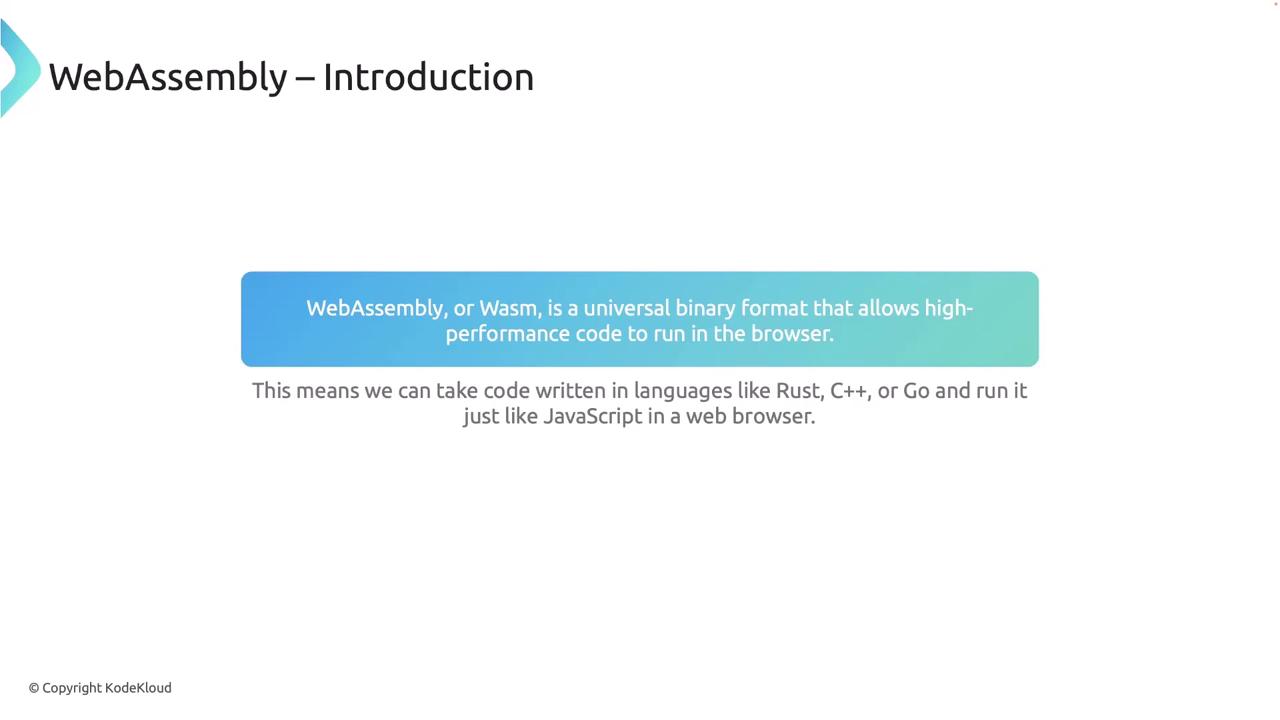
It’s important to note that WebAssembly is not designed to replace JavaScript, but rather to complement it. While JavaScript remains ideal for a wide range of web development tasks due to its flexibility and ease of learning, WebAssembly is tailored for compute-intensive activities.

Bridging the Gap in Browser Applications
WebAssembly comes into play when browser applications require enhanced performance for tasks like 3D gaming, photo editing, and other computation-heavy processes. By using high-performance languages for critical sections and JavaScript for UI and general logic, developers can achieve significant performance improvements.
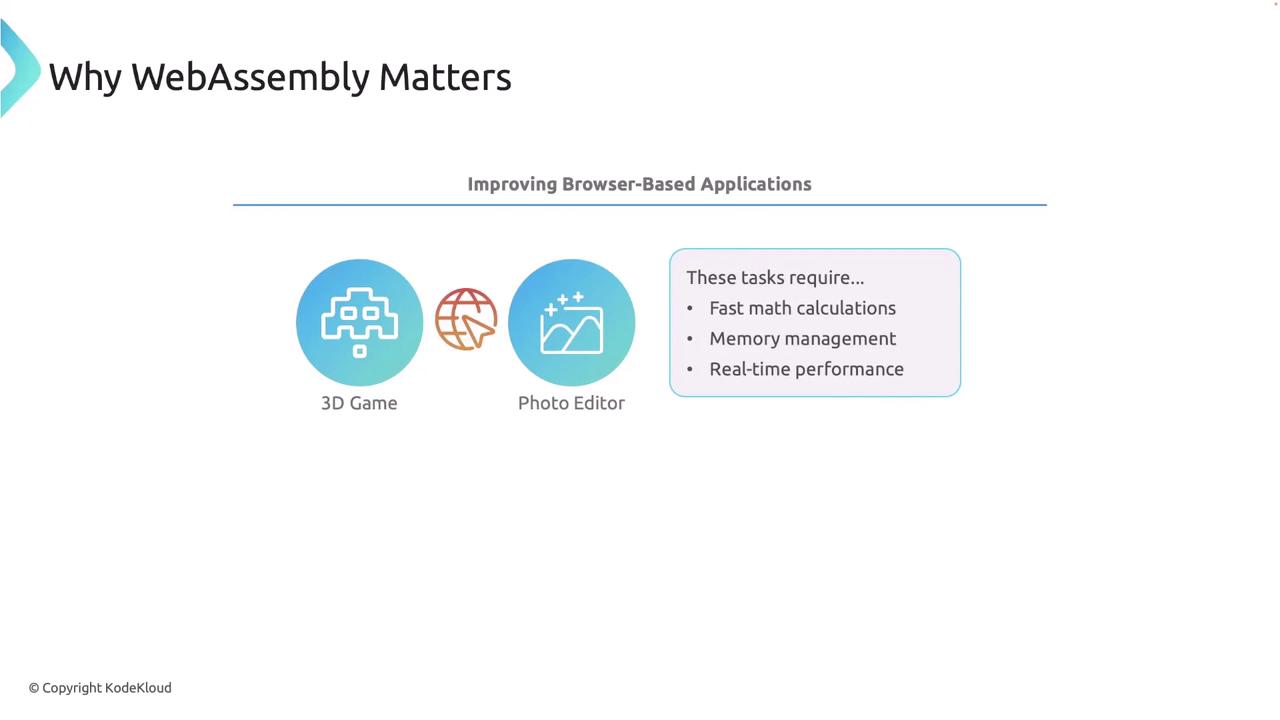
Think of WebAssembly as an additional performance layer in your browser-based applications. This approach allows you to optimize only the most demanding parts of your application without losing the advantages that the web platform provides.
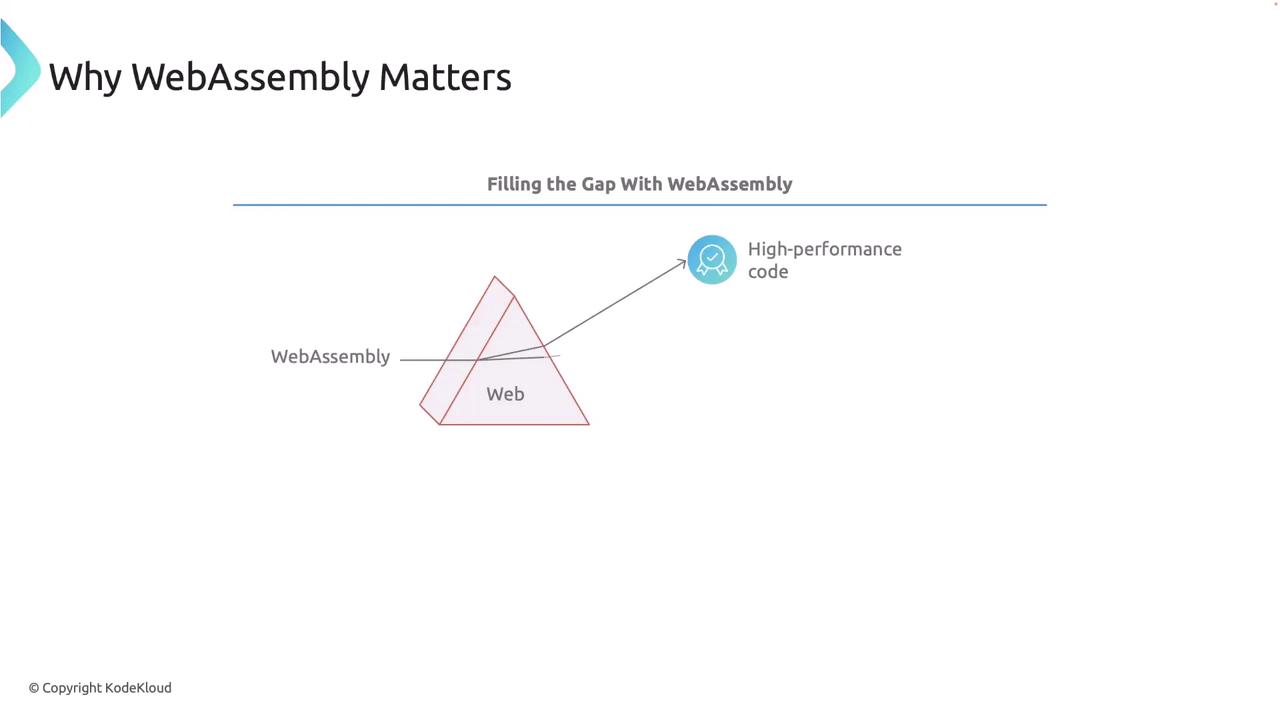
Real-World Examples of WebAssembly
WebAssembly brings tangible benefits to various domains. Here are some real-world examples demonstrating its impact:
Gaming:
Many modern online games leverage WebAssembly to manage real-time 3D graphics, physics calculations, and complex interactions. This results in smoother gameplay, improved responsiveness, and reduced lag during intense processing tasks.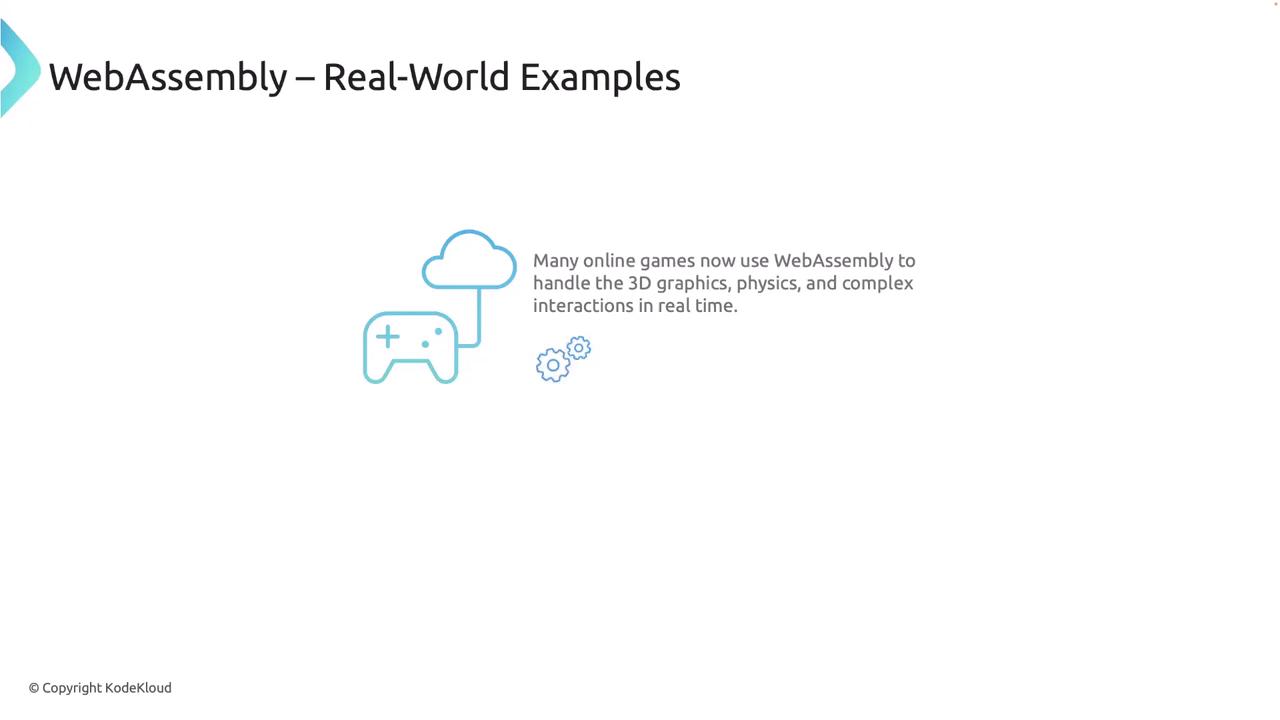
Video Editing Tools:
Imagine editing a high-definition video in your browser—applying filters, cutting frames, or adjusting brightness in real time. WebAssembly makes it possible to handle these resource-intensive tasks efficiently, providing a more responsive user experience.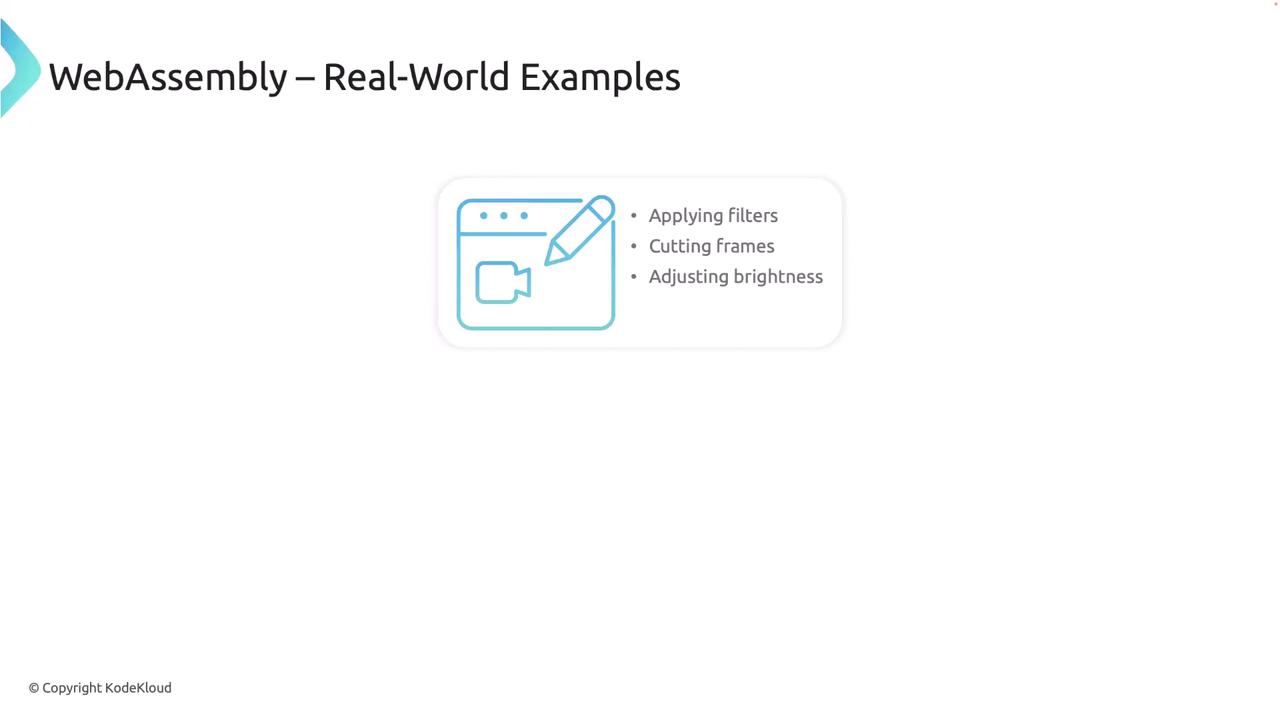
Scientific Simulations:
From real-time weather simulations to complex physics calculations, WebAssembly empowers researchers to run data-heavy processes directly in the browser without relying heavily on specialized software.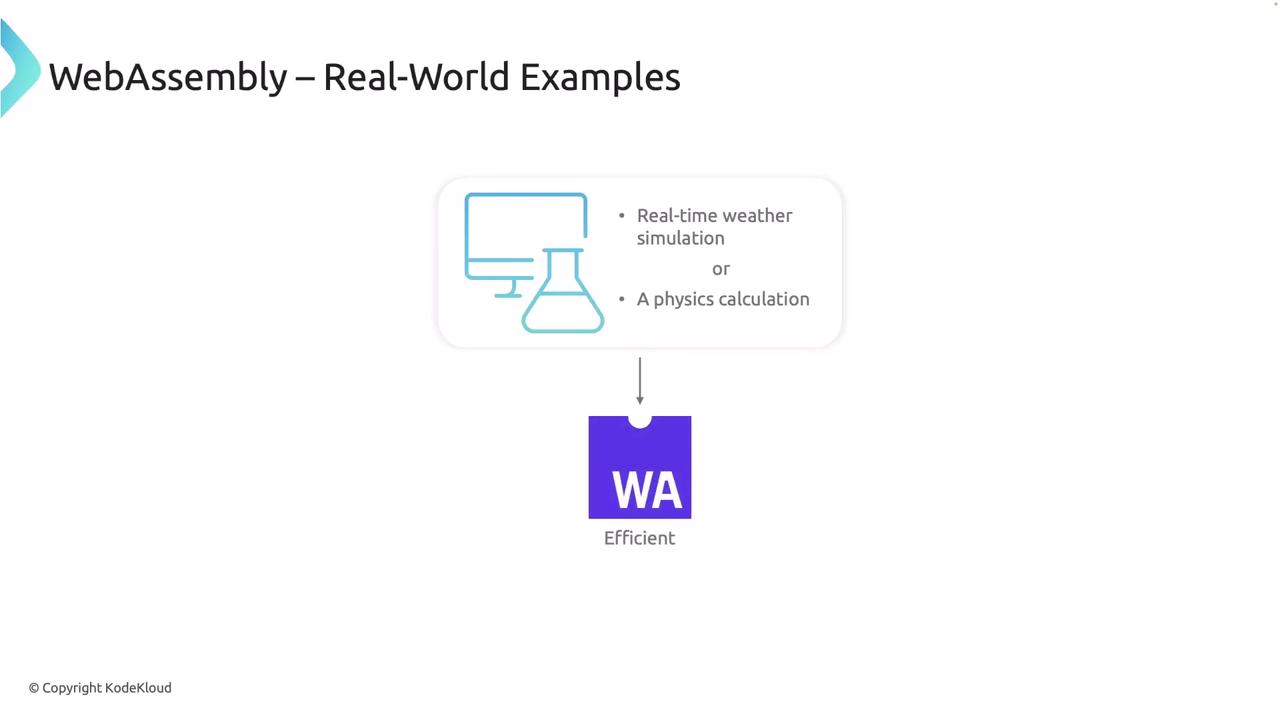
Why Rust is the Perfect Match for WebAssembly
Rust is renowned for its speed and memory safety, two critical aspects that make it an excellent choice for WebAssembly development.
Speed:
Rust is designed to be as fast as C++, ensuring swift data processing for real-time applications. This high level of efficiency is a significant advantage when handling performance-critical tasks on the web.Memory Safety:
Rust enforces strict memory management rules and detects many errors during compile time. This rigorous approach minimizes issues such as crashes and memory leaks—problems that are especially impactful in web environments.
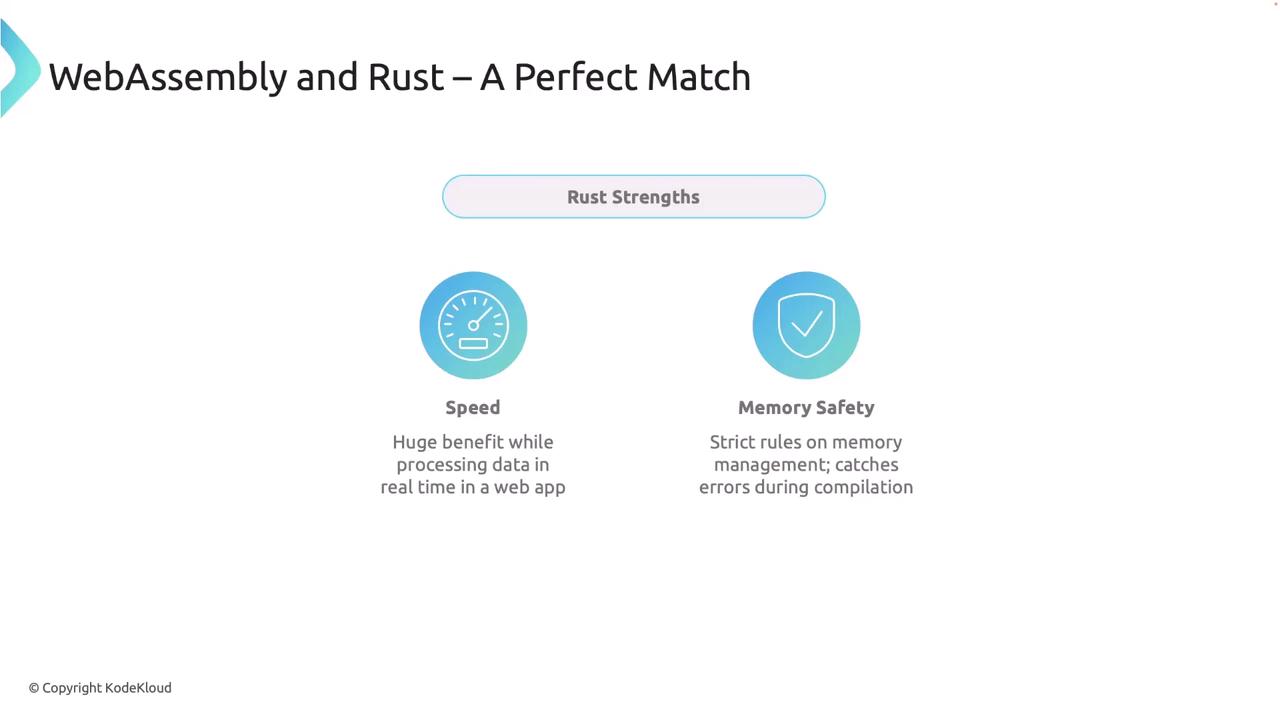
When compiled to WebAssembly, Rust code benefits from both efficient execution and a reduced memory footprint. The resulting modules are compact and fast-loading, significantly enhancing the performance of web applications.
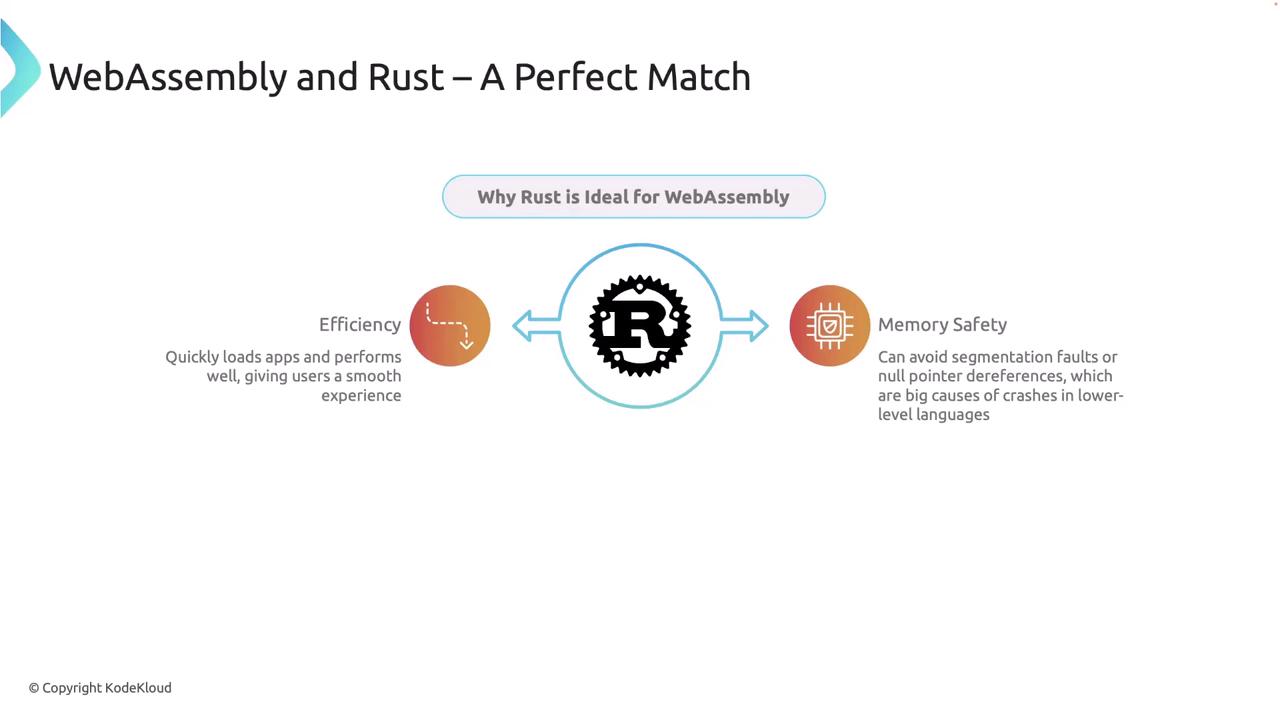
Did You Know?
By harnessing Rust’s capabilities, developers can build web applications that are not only powerful but also safe and reliable, making the most of what both WebAssembly and modern web technologies have to offer.
Conclusion
In this article, we covered the fundamentals of WebAssembly, its role in modern browser applications, and why Rust is ideally suited for tackling performance-intensive tasks on the web. WebAssembly empowers developers by allowing them to optimize the most demanding parts of their applications without compromising the accessibility and flexibility provided by traditional web technologies.
Stay tuned for our next article, where we will guide you through setting up your development environment and writing your first Rust code that compiles seamlessly into WebAssembly. For more in-depth insights and hands-on examples, continue following our series.
Next Steps
Be sure to check out our upcoming posts for practical tips and detailed tutorials on WebAssembly and Rust integration.
Watch Video
Watch video content